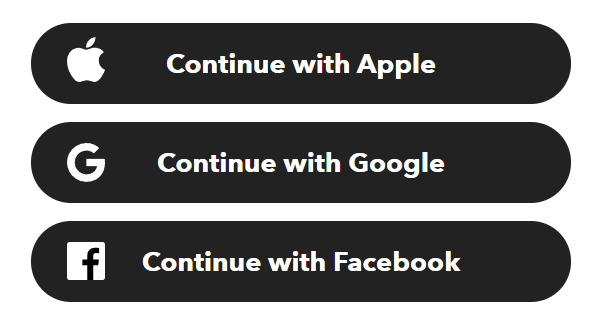Some years ago a colleague of mine reached out for help regarding the website she was responsible for. Back then our department’s adage was “to provide support for all B2C and B2B digital channels”. Catchy right? And since providing support is as wonderfully ambiguous as the acronyms it refers to, I happily sent out an invite for her to come and have a chat with me.
Our meeting started with the regular small talk about the weather and our department.
“I’ve worked here for over 20 years now,” she said. “And this is the first time I’ve ever been on this floor.”
This 6th floor, she was referring to, was filled with talent. True experts in Agile delivery. Developers, product owners, designers, researchers and scrum masters working together for the needs of our customers.
“We just started 4 years ago.” I replied. “We’re responsible for all customer facing digital channels.”
She looked at me with a forced smile. Back then our focus and responsibilities changed so often that I immediately started questioning what I’d just said.
“Ok.” she said, breaking the awkward silence. “Now I understand why there are so many people on this floor.”
As the chit chat continued, I put my MacBook Pro 16" on the table and typed in the URL of her website. The homepage loads and I see menu items, a stock hero image of someone smiling in a context where no smile has ever been detected. And a search bar.
“This looks different.” She said without hesitation.
The little experience i have with interviewing end-users stopped me from asking a leading question, so instead I took a second to formulate a “correct response”.
“What’s different about it?” I asked proudly.
“On my computer I have to scroll to see the search bar.”
Ah, the age old resolution dilemma. A challenge for people on both ends of the digital literacy spectrum. It’s not easy to understand and even harder to explain. But after years of practice, I thought I’d have no problem telling her why the website looked different on my 16" laptop. Ten minutes later, she was more confused than before.
Who’s to blame here?
I had planned a meeting to discuss potential usability challenges and KPIs for her digital channel. I had prepared a story about the added value of the double diamond process and the power of data informed decisions. And because of this, I didn’t really take the time to explain the “real questions” she didn’t know she had.
This experience stayed with me for a long time. Since then I’ve had numerous encounters with colleagues, friends and family where I find myself explaining “basic digital knowledge”. Now of course the phrase “basic” is subjective. For example, I don’t follow the whole NFT scene and therefore “basic NFT knowledge” often needs to be explained to me. So my own digital literacy also has a limit. Completely limited by my own choices on what to focus on and learn.
My job puts me in a position where I’m always aware of new technologies and their potential effect on my work and personal life. So for me, investing in my own digital literacy always feels like a choice that I’ve made. But I wonder how many other people have the freedom to make an explicit choice to limit or invest in their digital literacy. Or is technology simply moving too fast for them to make up their mind before they can even make that decision?
The stats
When we talk about digital literacy, we almost always tend to focus on the difference between the “older” and “younger” generations. So much so that one of the focus areas of the UN Decade of Healthy Ageing is digital literacy among the elderly. But it’s not just about the elderly, is it? How many “young” people do you know that can explain what a webbrowser is?. Or, how about this design pattern below?

On the surface, an easy and functional way to create an account. But how many of your friends really understand that in order to log into Spotify, they would need to use their Google or Facebook or Apple credentials. How does that make any sense? And it’s these standard design patterns that have started to worry me.
As a designer, we often fall back on design patterns that are widely used on digital channels. For instance, a login button at the top right corner of a website. Or an FAQ filled with accordions, housing the frequently asked questions and their respective answers. Reason being, these are patterns that have been tested, and therefore have been proven to work best. And even though we try to get a representable group of participants during a usability test of said patterns. The way we recruit less digital literate participants is often based on a questionnaire we ask the participants to fill out themselves. Like this example from the UK Government. And even though this specific example is really impressive, I’d still would like to see something more objective.
Measuring digital literacy

The only scientific research I’ve ever been a part of was during my years at University. In short, we were studying web navigation behaviour, and there was one thing we did consistently to get an indication of someone’s digital literacy when it came to web navigation. Before the actual test began, every participant was tested for their mental rotation ability (MRA). This ability was believed to be a significant predictor of success in the ability of human computer interaction [Quaiser-Pohl et al. 2006]. If the phrase “human computer interaction” wasn’t a dead giveaway for this insight’s age, then its publication date will definitely raise some suspicions around its validity. But still, it was a wonderful way to objectively get some insight into someone’s potential digital literacy. Furthermore, this MRA test showed us that our proposed solution would potentially benefit everyone, regardless of their MRA. And that conclusion is something I often miss when we test our digital interfaces. Because when we do come across a less “digital savvy” participant, they are often regarded as outliers. The exception to all the other participants who didn’t have any problems. And if 9 out of 10 participants don’t have any issues, it’s easy to forget about that one participant because most probably: “They are not our target audience”. The problem is that if everyone thinks this way, this group will never become anyone’s target audience until they’re old enough to become part of the UN Decade of Healthy Ageing.
Conclusion
The lack of focus on digital literacy in our field bugs me. And it’s not just a moral issue, i believe we’re losing money because of it as well. It bugs me even more when I read articles about how fast we actually believe our relationship with the digital world will change. Or maybe the jump into virtual reality helps users make sense of everything that’s currently too abstract to understand. Until then, I’m on the lookout for people and organisations that are working on this digital divide.
Please feel free to reach out to me. I'd love to talk.

